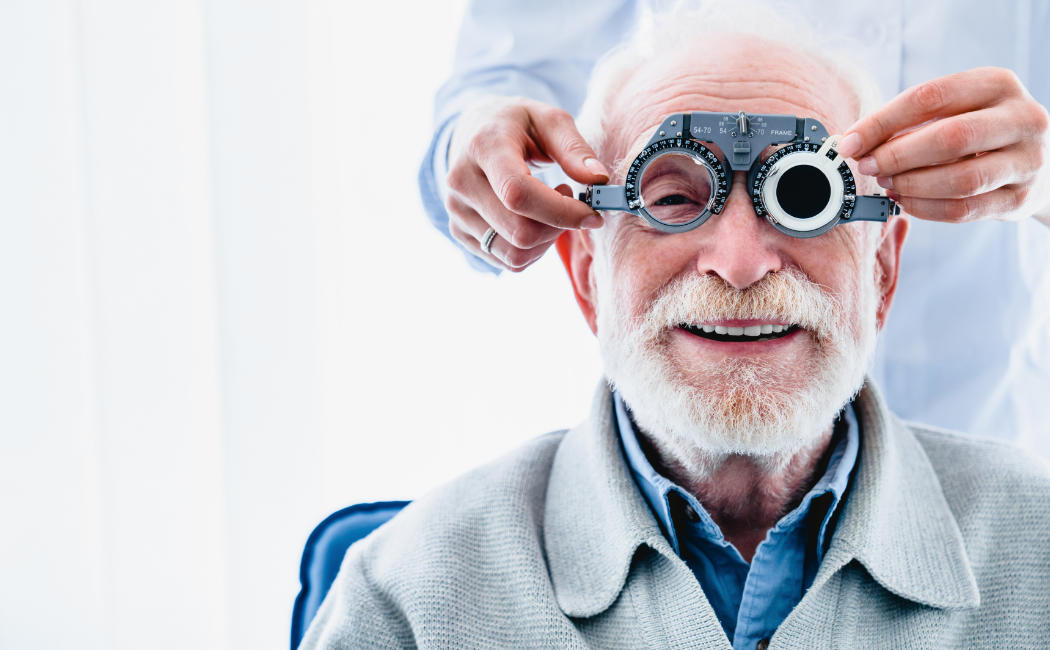
Cataracts
A cataract is a clouding of the crystalline lens. The crystalline lens is the eye's natural lens that can focus on images. As a result of aging, the natural lens loses its transparency, causing the images to be perceived in a blurred or fuzzy way. This is when they say that the person has formed a cataract.
Cataracts are not caused because the work of sight over the years. Cataracts is not transmitted from one eye to another, although it is normal to develop it in both eyes at once.
What causes cataract?
Nobody knows for sure why the crystalline lens gets a cataract over the years. However, there are some other factors that have proved to contribute to this and which we can prevent.
A prolonged exposure over the years to ultraviolet radiation from the sun without adequate protection contributes to its formation.
Some researchers think that a diet rich in antioxidants like vitamins A, C and E may delay the onset of cataracts. Unhealthy behaviours such as smoking or excessive alcohol consumption can contribute to its occurrence.
The truth is from the age of 50 there is a greater chance to start developing a cataract, without a specific cause for it other than age. For this reason this form of cataract is called senile cataract.
Other less common causes of cataracts are congenital cataracts, traumatic cataracts, because of the use of certain medication (corticosteroids), diabetic cataracts, etc..
What are the symptoms?
Initially the cataract causes a slight sensation of blurred vision, as if we were looking through a cloud, but as it advances it produces a slow but progressive loss of vision.
Some common symptoms reported are: increased glare or sensitivity to light, for example with the headlights of oncoming cars when driving; double vision in one eye, the need of brighter light for reading; frequent change of graduation of glasses; colours are perceived less vivid or yellowish.
How is it diagnosed?
Without proper instruments cataracts are usually undetectable to the naked eye. If you experience blurred vision or another of the outlined symptoms, you should go to your ophthalmologist for a complete examination.
The ophthalmologist will examine the inside of your eye to determine the type, size and location of the cataract.
At the consultation they will also use a device that determines the graduation of the lens that will be used to replace the natural crystalline lens during surgery.
At the same time a complete eye exam will be performed, to check if there are any other diseases that may interfere with vision after surgery.
What is it the treatment?
In the early stages of cataract, the blurred vision can be solved by changing the grade of the glasses. However, a definitive resolution of the problem is surgical removal of the cataract.
The surgical treatment of cataracts has improved over the last years thanks to the development of technological improvements.
Nowadays, cataract surgery is considered a minimal invasive surgery as it is performed under local anaesthesia through openings of less than 3 mm.
Using ultrasound, the crystalline lens fragments into small pieces which are aspirated and drawn into the interior of the eye.
Finally, an intraocular lens is inserted, completing the surgery in most cases without the necessity of any stitches.
Femto-Phaco Laser
The new Femto-Phaco laser for cataract surgery has been the subject of Dr. MGMarcos presentation at the last international congress of the American Academy of Ophthalmology (AAO) in Chicago. With 25 years of experience, M. G. Marcos, director of the Eye Clinic Marcos in Torre del Mar, is one of the pioneer ophthalmologists in Europe using femtosecond laser techniques for ocular microsurgery.
Indeed, the application of femtosecond laser for cataract surgery has been the subject of this international conference.
What is femtosencond laser?
Is an instrument with infrared wavelength of great precision.
What advantages does this new laser have?
Its safety, rapidity and accuracy. It can go through the cornea (first lens of the eye) and get to the cataract (the second lens of the eye) without needing to cut. The micro-incisions we draw in a computer representation of the eye are reproduce with micrometer accuracy by the laser in the real eye and while it is closed. It is spectacular. This technique is more accurate and safer than standard manual phaco, whichalso may be associated. Another advantage is experience. This is a new laser for cataract, but we have three years of experience in myopia, hyperopia and astigmatism surgery (dual laser technique that is five times safer than LASIK technique with blade cutting).
Do all cataracts can be operated with this laser?
No, but a high percentage do. It is almost a universal technique (with or without the manual phaco), and it is personalized. The complete examination by the ophthalmologist will decide, responsibly, the technique of choice.
Is it a very expensive technique?
No, because many cases may be operated and that reduces costs.
